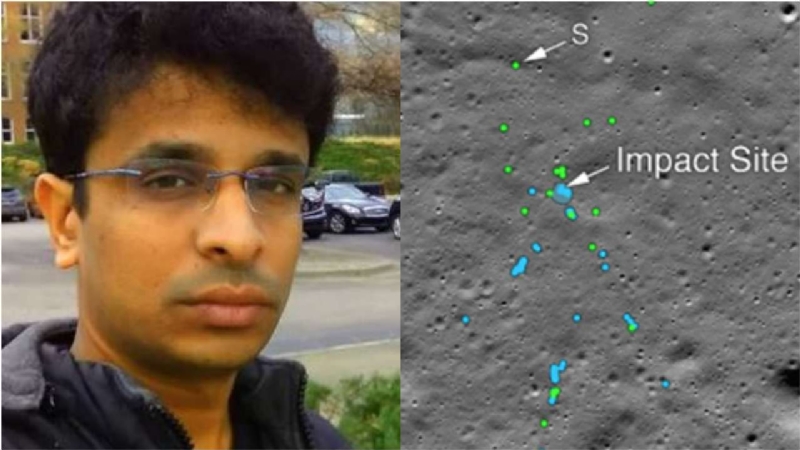Surprising moment for India! Chennai scientist Shanmuga Subramanian spots Vikram Lander on lunar surface
Total Views |
New Delhi, December 3: The wait and curiosity from the last three months that where the Vikram Lander on Chandrayaan 2 was lost, is now over. Indian scientist Shanmuga Subramanian, who works with NASA, today spotted the Vikram Lander at a point on lunar surface.

The images captured show the Vikram Lander impact point and associated debris field. Green dots indicate spacecraft debris (confirmed or likely). Blue dots locate disturbed soil, likely where small bits of the spacecraft churned up the regolith. "S" indicates debris identified by Shanmuga Subramanian.
The Chandrayaan 2 Vikram lander was targeted for a highland smooth plain about 600 kilometers from the south pole; unfortunately the Indian Space Research Organisation (ISRO) lost contact with their lander shortly before the scheduled touchdown on Sept. 7. Despite the loss, getting that close to the surface was an amazing achievement. The Lunar Reconnaissance Orbiter Camera team released the first mosaic of the site on Sept. 26 and many people have downloaded the mosaic to search for signs of Vikram.
Shanmuga Subramanian contacted the LRO project with a positive identification of debris. After receiving this tip, the LROC team confirmed the identification by comparing before and after images. When the images for the first mosaic were acquired the impact point was poorly illuminated and thus not easily identifiable.
“I had side-by-side comparison of those two images on two of my laptops. On one side there was the old image, and another side there was the new image released by NASA. It was quite hard, but I spent some effort” - Shanmuga Subramanian
Two subsequent image sequences were acquired on Oct. 14 and 15, and Nov. 11. The LROC team scoured the surrounding area in these new mosaics and found the impact site and associated debris field. The November mosaic had the best pixel scale and lighting conditions.
The debris first located by Shanmuga is about 750 meters northwest of the main crash site and was a single bright pixel identification in that first mosaic. The November mosaic shows best the impact crater, ray and extensive debris field.
